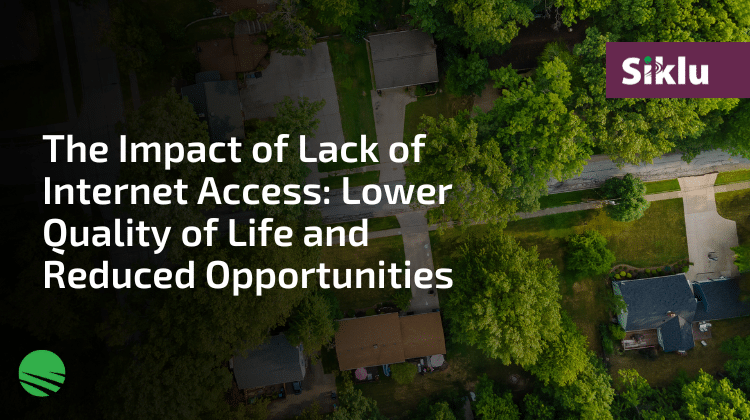Lack of internet access can have a number of negative consequences, including:
- Limited access to education and employment opportunities: Lack of access to broadband internet can limit access to education and employment opportunities, as many resources and opportunities are now available online.
- Reduced access to health information and services: Lack of access to broadband internet can also reduce access to health information and services, as many health resources and services are now distributed via providers’ online channels.
- Lower quality of life: In general, lack of access to broadband internet can lead to a lower quality of life, as it limits access to a wide range of resources and services that are now mostly available online and accessible via mobile devices capable of gigabit connectivity.
Broadband for All: Efforts to Expand Internet Access in Underserved Communities
To address these issues, there have been efforts to expand broadband access to underserved communities. For example, the Federal Communications Commission (FCC) has launched the Rural Digital Opportunity Fund (RDOF), which aims to provide high-speed broadband to unserved rural areas in the United States. There have also been efforts to expand broadband access globally, through initiatives such as the ITU’s Connect 2020 Agenda, which aims to bring broadband access to at least 50% of the global population by 2020.
Overall, the global increased need for bandwidth and gigabit connectivity has highlighted the issue of digital divides and “digital deserts,” which are areas that do not have access to high-quality broadband internet. To address these issues, there have been efforts to expand broadband access to underserved communities and to bring broadband access to at least 50% of the global population.
There is a global increased need for bandwidth and gigabit connectivity due to the increasing reliance on the internet for a wide range of activities. Here are a few data points that demonstrate this trend:
- Internet usage: Internet usage has increased significantly in recent years, with more and more people using the internet for a wide range of activities, including communication, entertainment, education, and work. According to data from the International Telecommunications Union (ITU), the number of internet users worldwide increased from 738 million in 2000 to 4.9 billion in 2020.
- Online streaming: Online streaming has become increasingly popular in recent years, with more and more people turning to streaming services for entertainment. According to data from the ITU, the number of online video users worldwide increased from 1.2 billion in 2014 to 3.2 billion in 2020.
- Remote work: The COVID-19 pandemic has also led to an increase in the number of people working remotely. According to data from the ITU, the number of people working from home increased from 5% in 2019 to 44% in 2020. This trend has put a strain on internet infrastructure and has increased the need for high-bandwidth, low-latency connectivity.
Overall, these data points demonstrate a global increased need for bandwidth and gigabit connectivity due to the increasing reliance on the internet for a wide range of activities, including communication, entertainment, education, and work. As the internet continues to play a central role in our daily lives, the need for high-bandwidth, low-latency connectivity is likely to continue to grow.





 by
by 

